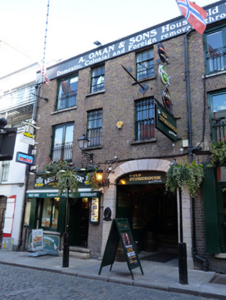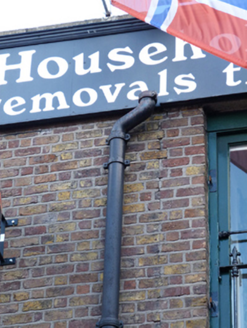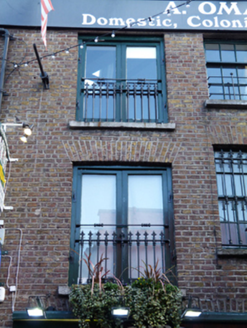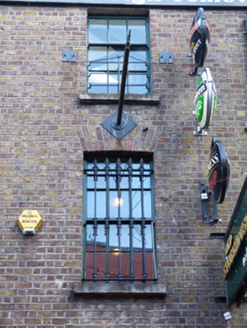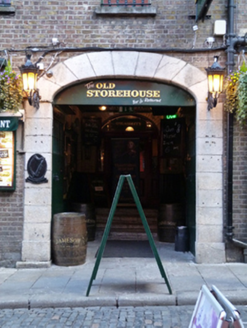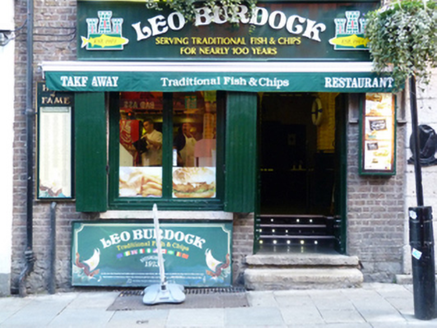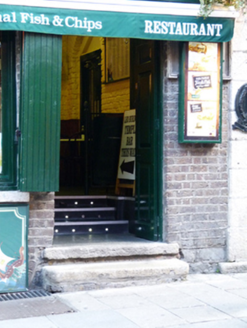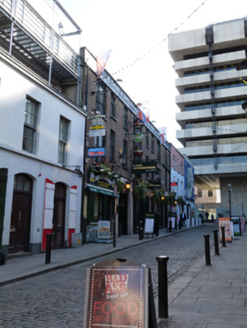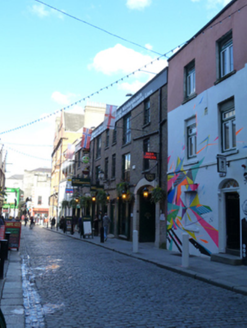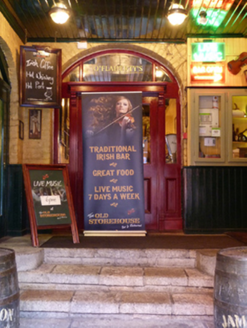Survey Data
Reg No
50020178
Rating
Regional
Categories of Special Interest
Architectural, Social
Previous Name
Oman and Sons
Original Use
Store/warehouse
In Use As
Restaurant
Date
1820 - 1840
Coordinates
315756, 234156
Date Recorded
10/03/2015
Date Updated
--/--/--
Description
Attached eight-bay three-storey former warehouse over basement, built c.1830, with integral carriage arches to south and north ends, and returns to rear (east) elevation. Now in use as commercial premises. Hipped and pitched slate roofs, hidden behind brick parapet with carved stone coping, cast-iron rainwater goods. Flat roofs to returns. Brown brick walls, laid in Flemish bond, having brick relieving arches, with squared calp limestone plinth course. Brown brick walls laid in English garden wall bond to rear. Square-headed window openings having granite sills, six-over-six pane and three-over-six pane timber sliding sash windows and bars. Square-headed loading door openings with granite sills and mild steel bars. Square-headed door openings with granite steps, overlights and timber panelled doors. Elliptical-headed carriage arches with cut granite surrounds and double-leaf part-glazed timber battened doors. Recent shopfront to ground floor. Basement lights to front. Situated to south end of east side of Crown Alley.
Appraisal
Crown Alley, a narrow, irregular passageway connecting Temple Bar and Dame Street, was laid out in the early eighteenth century. Following the construction of the Ha’penny Bridge and Merchants’ Hall the Wide Street Commissioners took the opportunity to widen and improve the passageway. This is one of the finest surviving warehouses in the area, a building type that would have characterised Crown Alley in the mid-nineteenth century. Although it has been somewhat altered, it retains its historic form and character, with several distinctive features which are typical of warehouses, notably the vertically-arranged loading bays and well-executed carriage arch that add textural and tonal variation to the façade, as well as contextual interest.

